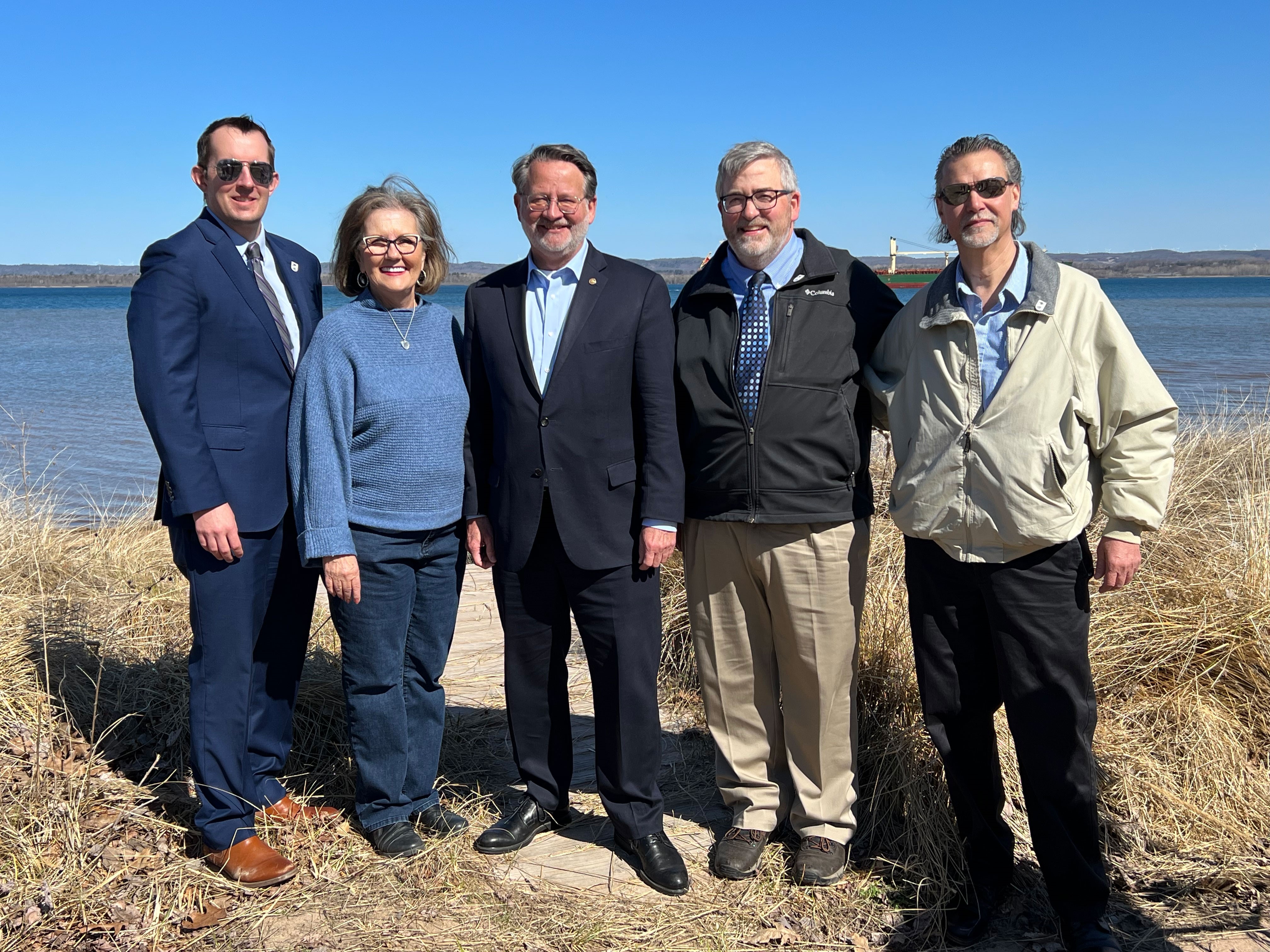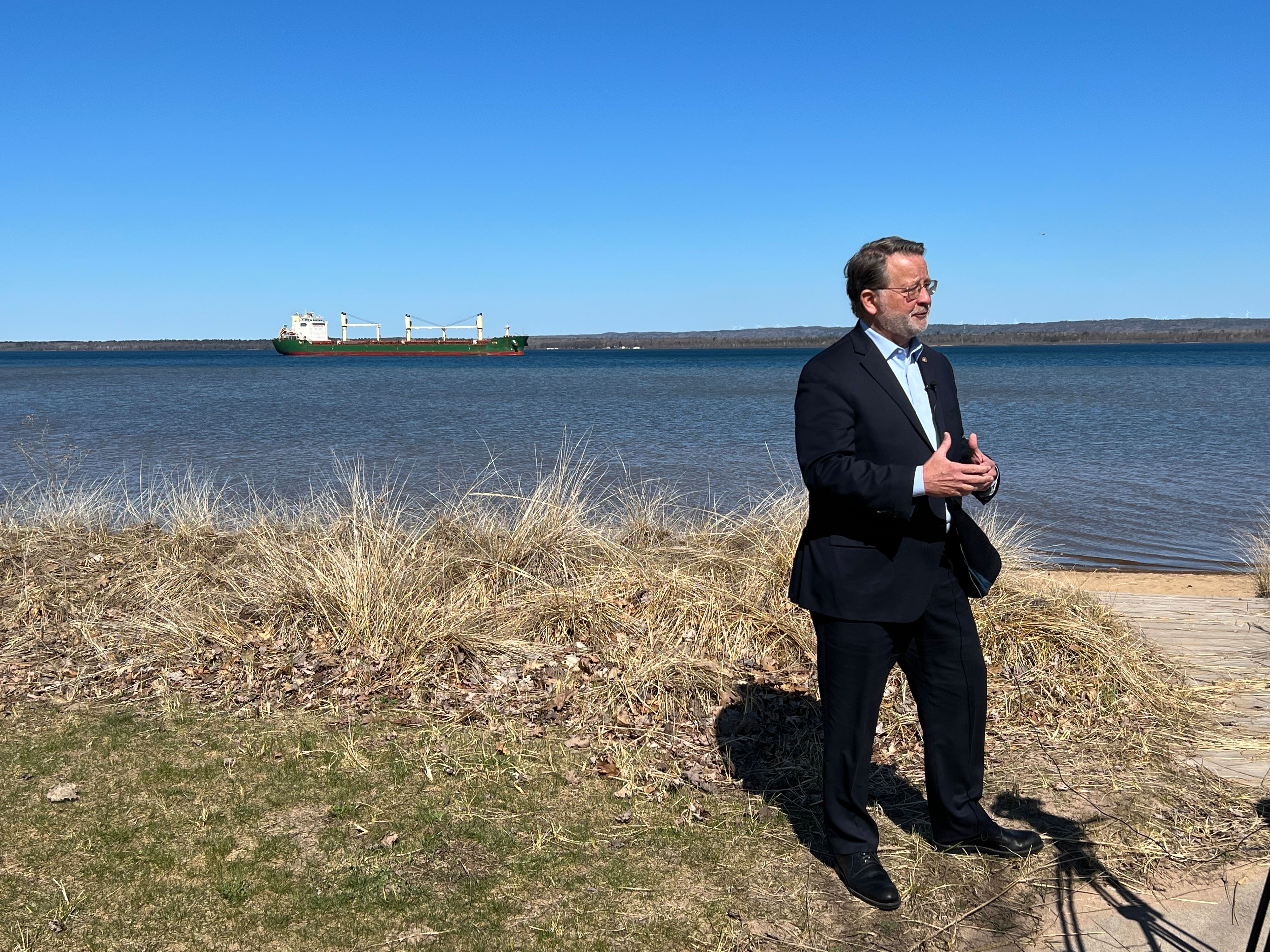PHOTOS: In Sault Ste. Marie, Peters Highlights $500 Million in Funding for STORM Act Loan Program to Protect Michigan Communities from Coastal Erosion and Rising Water Levels
Peters Secured First Funding for Loan Program in Bipartisan Infrastructure Law
SAULT STE. MARIE, MI – U.S. Senator Gary Peters (MI), Chairman of the Homeland Security and Governmental Affairs Committee, toured the Sherman Park beachfront in Sault Ste. Marie and highlighted the $500 million he secured in the bipartisan infrastructure law to fund a loan program he created to help communities in Michigan and across the nation invest in resilient infrastructure projects that will protect against coastal erosion, rising water levels, and severe flooding. This is the first funding for the program created by Peters’ Safeguarding Tomorrow through Ongoing Risk Mitigation (STORM) Act, which was signed into law last year. With the new funding Peters secured, the program will help states establish revolving loan funds that can be used to support local infrastructure projects to protect against natural disasters that have put homes, small businesses, property, and communities at risk, and caused millions of dollars in damages. Peters was joined by Sault Ste. Marie Mayor Don Gerrie and Executive Director for the Sault Convention & Visitors Bureau Linda Hoath.
“The endless beachfronts like the one here at Sherman Park are essential to the tourism industry and local economy in the Soo and across Michigan. For years, I have heard from communities across our state that they need more federal support to help protect residents, homes, and small businesses from the impacts of coastal erosion and rising water levels on the Great Lakes,” said Senator Peters. “That is why I helped create a low-cost loan programs through the STORM Act, and the funding I secured will ensure these communities can access resources to help them build more resilient infrastructure that can withstand erosion and other natural hazards for years to come.”
“Coastal erosion continues to damage homes and businesses, highlighting why communities like ours need help to invest in projects that will mitigate the effects of rising water levels and coastal erosion. I’m thankful to Senator Peters for his efforts to create and secure funding for a loan program that will allow cities like ours to build resilient infrastructure that will keep our residents safe,” said Mayor Gerrie. “The beachfront at Sherman Park is an essential part of the community in Sault Ste. Marie and I appreciate Senator Peters for his tireless work to ensure we can keep our coastlines like this one pristine for years to come.”
“Sault Ste Marie’s tourism industry is critical to supporting our economy and small businesses. When coastal erosion damages local attractions – like Sherman Park’s beach front – it threatens our local businesses and employees that depend on tourism for their livelihoods,” said Linda Hoath. “I am grateful to Senator Peters for his tireless work to create a low-cost loan program, and secure funding for it, so that communities like Sault Ste Marie can invest in mitigation efforts and protect our local economies in a cost-effective manner.”
During the walking tour, Peters saw firsthand how these resources could help Sault Ste. Marie update their current infrastructure and invest in new structures like sea walls, breakers and barriers that will improve the city’s ability to address coastal erosion and rising water levels that damage property and businesses. The loan program and funding for Peters’ STORM Act will allow local governments to access needed funds to make critical infrastructure upgrades and help mitigate the impact of natural disasters in a more cost-effective way. Studies have shown that resilience and mitigation spending saves taxpayers an average of $6 for every $1 invested.
Unlike existing Federal Emergency Management Agency (FEMA) grants, the low-interest loans created by Peters’ STORM Act would allow local governments to invest in resiliency and mitigation projects that reduce the effects of shoreline erosion and rising and high water levels, along with other natural disasters. These loans would reach communities more quickly than FEMA’s traditional grants, and provide local communities with the capital necessary to invest in more resilient infrastructure.
To download high-resolution photos from the visit, click here or on the images below.


Images are courtesy of Senator Peters’ office
###